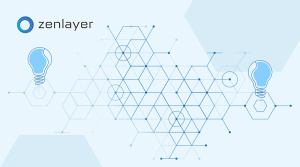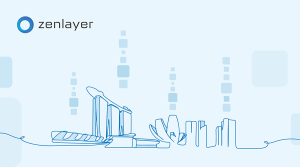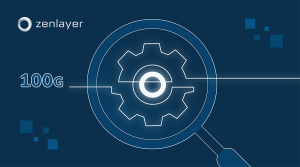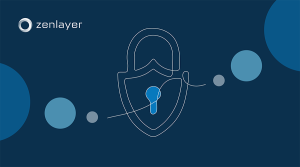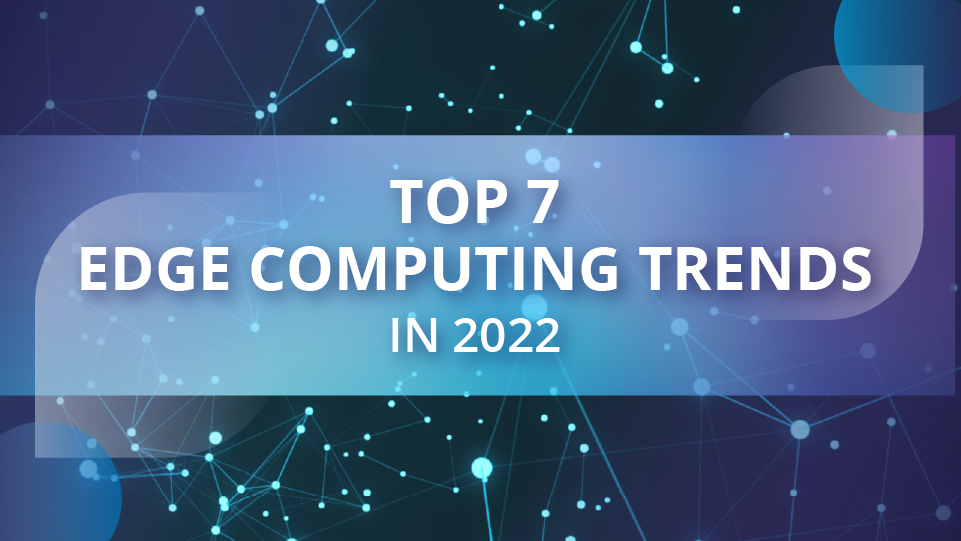
Things are moving quickly in the edge computing space, with more and more companies using distributed edge models to improve data processing and analytics. In fact, by 2023, more than 50% of new enterprise IT infrastructure deployments will take place at the edge of the network instead of central data centers. (1)
All signs indicate 2022 will be a pivotal year for edge computing. Let’s take a closer look at some of the top edge computing trends to watch out for over the next several months.
Top edge computing trends for 2022
1. Powering blockchain proof of stake deployments
Many blockchain deployments now rely on proof of stake (PoS) consensus mechanisms. These mechanisms can potentially offer higher transaction rates, with lower operational costs compared to proof of work (PoW) architectures. However, proof of stake chains also require higher computational power and rely heavily on peer communication. Companies therefore need to have the hardware and networking resources in place to support them.
In light of this, blockchain proof of stake is a noteworthy edge computing future trend. A growing number of blockchain companies are using distributed edge computing architectures to support proof of stake nodes. Edge computing models can lower processing times and improve reliability, allowing companies to experience the full power and benefits of proof of stake chains.
2. Edge computing will support the metaverse
Another emerging edge computing market trend is the metaverse — a massive, interoperable three-dimensional world for things like gaming, socializing, shopping, meeting, and learning. Right now, the metaverse is still in its infancy. However, it has the potential to become an $800 billion market. (2) And edge computing will play a key supporting role.
The metaverse contains several different layers, including a decentralization component which combines blockchain and edge computing infrastructure to enable simultaneous streaming experiences at scale. Edge computing takes pressure off the public cloud and makes it possible to achieve lightning-fast, 3D experiences for users.
3. The rise of edge containers
Looking forward to seeing more software containers deployed at the edge of the network, along with orchestration platforms like Kubernetes. Containerization involves packaging applications in a way that isolates software and its dependencies from other components. Containers are highly portable and lightweight, which make them easy to deploy and maintain. You can use them in public, private, and hybrid cloud environments.
Unlike traditional cloud containers, edge containers run at the edge of the network. They offer several advantages including lower latency, global load balancing, and lower bandwidth consumption.
4. COVID-19 will push more companies to the edge
Cloud computing has been receiving the lion’s share of attention throughout the global pandemic. As we head into year three of COVID-19, the focus is starting to shift more to edge computing and edge cloud. Companies across all industries are looking to increase operational responsiveness, enhance digital experiences for end users, and use their cloud services more effectively.
According to the IBM Institute for Business, 91% of global executives expect their organization to implement edge computing by 2025. And 84% believe edge applications will positively impact operational responsiveness and lead to significant business benefits. (3)
5. Edge computing will achieve double-digit growth
This year, spending on edge computing will reach $176 billion for a 14.8% YoY increase. By 2025, edge computing spend could balloon to $274 billion.
IDC predicts content delivery networks and virtual network functions will see the largest investments in 2022. Enterprises will also invest heavily in edge computing for manufacturing operations, production asset management, and omnichannel operations, among others.
6. Edge computing will unlock more value from 5G
Organizations are investing in 5G to streamline data collection, power IoT devices, and enhance digital experiences. Under optimal conditions, 5G is about 10 times faster than 4G. But while 5G can provide fast local connectivity, the technology doesn’t account for compute or storage. Most businesses still run supporting functions through a central data center, which creates latency and reduces network performance.
Looking forward, more companies will augment 5G deployments with edge computing. This approach can reduce latency, and help companies generate stronger ROI from their 5G rollouts. Edge computing also helps with use cases like virtual and augmented reality and self-driving cars which require processing heavy amounts of real-time data with minimal latency.
7. Securing the network perimeter
From a cybersecurity perspective, edge computing creates a larger attack surface for hackers to access sensitive data. So as companies move from centralized data centers to distributed frameworks, they also need to rethink their security strategies and look for new ways to fortify their endpoints.
Organizations are increasingly using Secure Access Service Edge (SASE) to strengthen security at the edge of the network. SASE is a cloud-based IT framework that combines network security tools and software-defined networking through a single dashboard. For example, SASE can provide access to services like cloud DDoS protection, virtual private networking, and data loss prevention. Gartner predicts that by 2024, up to 40% of enterprises will adopt SASE strategies. (4)
Zenlayer makes edge computing simple
These are just a few edge computing industry trends to know about. The fact is, this is a fast-moving market, and it can be difficult to stay on top of new developments. But here at Zenlayer, we make the process safe, easy, and intuitive.
Check out our Bare Metal Cloud service for data hosting and edge compute. And with Zenlayer Cloud Networking, you can instantly connect edge servers to the public cloud. Both services come with 24/7 WOW customer service and the full support of Zenlayer’s global team of experts.
Reference:
(1) IDC: https://blogs.idc.com/2020/06/01/edge-computing-not-all-edges-are-created-equal/
(2) Bloomberg: https://www.bloomberg.com/professional/blog/metaverse-may-be-800-billion-market-next-tech-platform/
(3) IBM: https://newsroom.ibm.com/IBV-edge-responsiveness
(4) Gartner: https://www.gartner.com/en/documents/3970571/emerging-technology-analysis-sase-poised-to-cause-evolut

